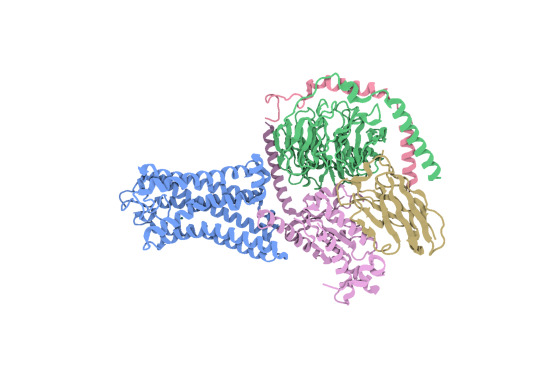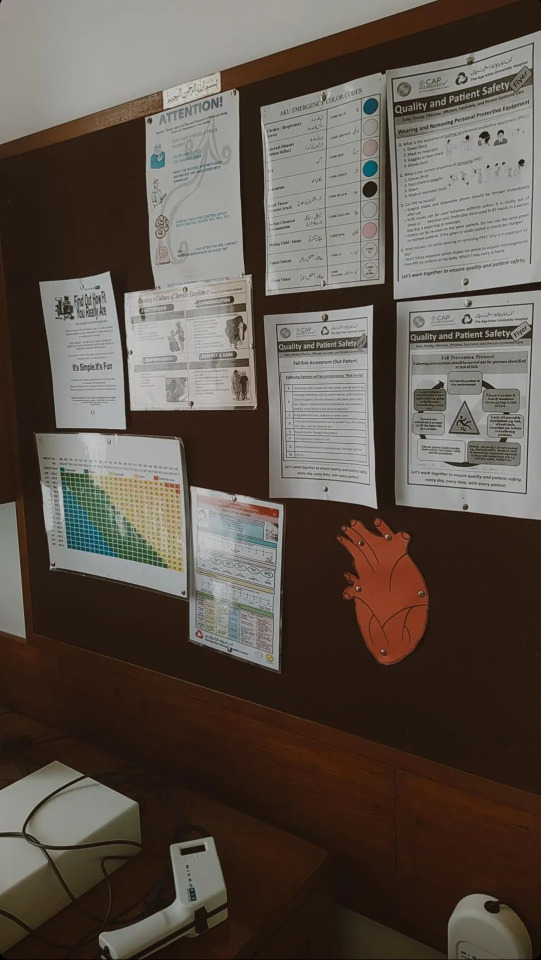#biomedical research
Text
#like... that's fucked up#the critters are stabbed in the heart they steal most of their blood and then throw them back in the ocean to die#news#npr#6/10/2023#horseshoe crabs#horseshoe crab#bleeding alive#biomedical research#overfishing#corporate greed#uncute animals#not charismatic megafauna#marine life#animal testing#tw: animal death#environment#environmentalism#blue blood#that's their blood not energy drinks as my brain first thought looking at that image#wanna see something fucked up?
8 notes
·
View notes
Text
Mechanistic insight into odorant recognition
Our sense of smell is dependent on recognition of a vast array of odorants despite having a finite number of receptors. Odorants are mostly detected by G protein-coupled receptors called odorant receptors in olfactory sensory neurons. While there are only approximately 400 odorant receptors in humans, combinatorial activation of these odorant receptors enables sensing of odorants with diverse chemical structures. However, the mechanistic basis of odorant binding to odorant receptors in humans has remained unclear.
SBGrid member Aashish Manglik and other researchers have been working to develop a structural understanding of how odorants are recognized by odorant receptors. Using cryo-EM, they report the structure of active human odorant receptor OR51E2 bound to fatty acid propionate.

Above: Structure of human OR51E2 bound to propionate in complex with miniGs399. CC BY SBGrid.
Based on this structure, they determined that propionate is bound within a pocket in the odorant receptor and makes specific contacts to achieve activation. After mutating the odorant-binding pocket, they observed altered recognition of fatty acids with varied chain length. This suggests that activation of odorant receptors by odorants is influenced by tight packing interactions. Through molecular dynamics simulations, they show that propionate induces conformational changes in a specific region of odorant receptor OR51E2, extracellular loop 3. This work provides a foundational understanding of odorant recognition by human odorant receptors at a high-resolution, structural level.
Read more about this work in Nature.
#nature#science#cell#structural biology#sbgrid member research#sbgrid#biomedical research#cryo-EM#biomedicine#biomedical engineering
13 notes
·
View notes
Text
#menstruation#medical science#biomedical science#biomedical research#interesting#womens health#women’s health#how tf do we not know this yet
4 notes
·
View notes
Photo

Bunged-up Lungs
Sleeping sickness is a disease caused by Trypanosoma brucei parasites. Thanks to recent control efforts, there are fewer cases worldwide than there have been for 80 years. The World Health Organisation aims to make sleeping sickness the second eradicated human infectious disease by 2030. But to fix something, we have to understand it, and there are still sleeping sickness mysteries to unravel. Here, in false colours, we see lung tissue from a mouse (grey) infected with T. brucei (blue). Scientists showed for the first time that the parasite forms nests in the lungs, explaining why one in five people with sleeping sickness has a cough or difficulty breathing. T. brucei also dampens the immune system in the lungs, making people more vulnerable to other infections. These insights could help doctors to diagnose symptomless people who carry the parasite, which may help stop the spread of sleeping sickness and eliminate it sooner.
Written by Henry Stennett
Image from work by Dorien Mabille and colleagues
Laboratory of Microbiology, Parasitology and Hygiene, Infla-Med Centre of Excellence, University of Antwerp, Wilrijk, Belgium
Image originally published with a Creative Commons Attribution 4.0 International (CC BY 4.0)
Published in Nature Communications, November 2022
You can also follow BPoD on Instagram, Twitter and Facebook
#science#biomedical research#biomedicine#trypanasoma brucei#sleeping sickness#t.brucei#parasites#lung#pulmonary#immune system#electron microscopy
10 notes
·
View notes
Text
Van Gogh yellow, Monet violet.
What about Pubmed blue?
#stem#biomedical science#dark academia#studyblr#van gogh#monet#van gogh yellow#monet violet#biomedical research#immunology#biochemistry#omics#scientific research#university#dark academia aesthetic#chaotic academia#stem academia#artists#academic#academia#academic literature#PhD#post-grad
25 notes
·
View notes
Text
22.9.22 | Thursday





can't believe this year is almost over...jakdkska.
prolly the most academically challenging year for me, and not even coz the courses were tough; sometimes life just shows you how unpredictable it can be and how helpless you actually are.
work's been good.
#biomedical engineer#studyblr#engrblr#university#postgradblr#workblr#spotify#biomedical research#ugh#stress#life teaches you lessons#and its ok#to fail#and it's ok to feel like a failure#but then you take care yourself#and become better and happier
5 notes
·
View notes
Text
#female muscle#sports#female bodybuilding#muscle women#women's sports#strong women#health#biomedical research
1 note
·
View note
Text
Miniaturizing Innovation: Exploring the Microfluidics Market
In the realm of life sciences and healthcare, the Microfluidics market is emerging as a transformative force, enabling researchers and clinicians to miniaturize laboratory processes and revolutionize diagnostics and therapeutics. This article delves into the burgeoning field of microfluidics, its applications in biomedical research and diagnostics, and its potential to reshape the healthcare landscape.
Microfluidics, the science of manipulating fluids at the microscale, offers a versatile platform for a wide range of applications, from drug discovery and genomics to point-of-care diagnostics and personalized medicine. By leveraging the unique physics and mechanics of fluid flow at small scales, microfluidic devices enable precise control over sample volumes, reaction kinetics, and experimental workflows.
The Microfluidics market encompasses an extensive array of technologies, including lab-on-a-chip devices, microfluidic pumps, valves, and sensors, as well as integrated systems for automated sample preparation and analysis. These miniaturized platforms offer numerous advantages over traditional laboratory techniques, including reduced sample and reagent consumption, faster analysis times, and increased sensitivity and throughput.
One of the key drivers propelling the growth of the Microfluidics market is the increasing demand for point-of-care diagnostics and personalized medicine. Microfluidic devices enable rapid and cost-effective analysis of biological samples, allowing for early detection of diseases, monitoring of treatment efficacy, and tailoring of therapies to individual patient needs.
In addition to healthcare applications, microfluidic technologies are transforming the landscape of biomedical research, enabling researchers to conduct experiments with unprecedented precision and scalability. From studying cellular dynamics and microorganisms to exploring complex biological phenomena, microfluidic platforms offer insights that were previously inaccessible using conventional laboratory techniques.
Moreover, the integration of microfluidics with other emerging technologies, such as artificial intelligence (AI) and advanced imaging techniques, is expanding the horizons of biomedical research and diagnostics. By combining microfluidic devices with AI-powered analytics and high-resolution imaging systems, researchers can extract valuable insights from complex biological data with unprecedented speed and accuracy.
Want to learn more? Get Sample PDF Copy
As the Microfluidics market continues to evolve, collaboration between academia, industry, and healthcare providers will be essential to realize its full potential. Addressing challenges such as standardization, scalability, and regulatory compliance will be crucial to accelerating the adoption of microfluidic technologies across diverse applications and settings.
In conclusion, the Microfluidics market represents a paradigm shift in biomedical research and diagnostics, offering a powerful platform for innovation and discovery. With its ability to miniaturize laboratory processes, enhance analytical capabilities, and enable personalized healthcare solutions, microfluidic technology is poised to shape the future of medicine and healthcare delivery, driving advances that benefit patients, researchers, and clinicians alike.
#Microfluidics#Biomedical Research#Lab-on-a-chip#Point-of-care Diagnostics#Life Sciences#Healthcare Technology
0 notes
Text
If you are new to biomedical research. Have absolutely no idea where to start.. click the link to find “must have” English biomedical research books to get you started. They are the most forward and easy to navigate. Good Luck 👍
0 notes
Text
INTERNATIONAL JOURNAL ON BIOMEDICAL RESEARCH AND TECHNOLOGY
About Us
The only motto of International Journal on Biomedical Research and Technology (IJBRT) Publishers is accelerating the scientific and technical research papers, reflecting the standards of technology and the human health in the progressive levels and several emergency medical and clinical issues associated with it, the key attention is given towards biomedical research. Thus, asserting the requirement of a common evoked and enriched information sharing platform for the craving readers.
IJBRT is such a unique platform to gather and expose scientific knowledge on science and related discipline. This multidisciplinary open access publisher is rendering a global podium for the professors, academicians, researchers and students of the relevant disciplines to share their scientific excellence in the form of an original research article, review article, case reports, short communication, e-books, video articles, etc.
IJBRT Publishers are self-supporting, with no dependance on any other external sources (like universities, centers) for funds and strives for the best and enhanced quality publications competes the worldwide open access publishing market.
We always rely on the support from the members of our IJBRT family that is relevantly our Authors, Editorial Committee members, advisory board, Reviewers Board, and all the technical support teams all over the globe. We trust in the communal coordination and collaboration in terms of communicating the scientific knowledge of persons and Groups of Research centers/areas will in turn educates and elicits in innovative research.
In this case we would like to act as a media that anchors in the transformation of information in the form of global online publication.
To know more about our Journal: https://ijbiomed.com/
#International Journal on Biomedical Research and Technology#Biomedical Research#Biomedical Science#Open access Journals#Open access publishers
1 note
·
View note
Text
HISTORIC FUNDRAISING - NFT DIGITAL BIO-ART CAMPAIGN
HISTORIC FUNDRAISING – NFT DIGITAL BIO-ART CAMPAIGN
Mountain View, California, Nov. 18, 2022 (GLOBE NEWSWIRE) — SENS RESEARCH FOUNDATION (SRF) has launched its 2022 End of Year Campaign to raise funds for its research dedicated to eradicating age-related disease. SRF is a California 501(c)(3) non-profit working on addressing aging medically through its SENS damage-repair approach (Strategies for Engineered Negligible Senescence).
Their campaign…

View On WordPress
#aging#artwork#biomedical research#cryptocurrency#curing diseases#digital art#gamification#laboratory#longevity#NFTs#science#SENS Research Foundation#web3
0 notes
Text
Understanding how iron affects stearoyl-CoA desaturase-1 activity.
Enzymes are the manufacturing facilities of the cell. They take the materials provided by the environment and convert them into cellularly relevant chemicals. The physical processes that allow enzymes to do this vital work are of interest to scientists because of the possibility of treating enzyme-related diseases, using enzymes as therapies for neurodegenerative diseases, and harnessing their manufacturing process for production of chemicals relevant to society. In a recent study by SBGrid member Ming Zhou from Baylor College of Medicine, the maintenance and function of a subclass of enzymes becomes more apparent.
Stearoyl-CoA desaturase-1 (SCD1) is an enzyme that localizes in the endoplasmic reticulum of cells and contains two iron atoms at its core. SCD1 uses the core irons to carry out the catalytic function of adding a double bond to fatty acids, thus creating unsaturated fatty acids. This enzyme contributes to diseases like cancer and diabetes and is a possible target to treat neurodegenerative diseases. Zhou and colleagues pursue an answer to how and why SCD1 loses enzymatic activity after a certain amount of uses.

Above: Published structure of SCD-1 diiron active site. PDB: 6WF2. CC BY SBGRID
Similar to common machines in a household, enzymes stop functioning after a certain number of uses. Understanding why a machine stops working can provide insight about how to keep them working longer and more effectively. Zhou and company used enzyme activity assays to show that SCD1 lost function after 8.5 reactions due to the loss of an iron from the active site of the enzyme. The team used UV-vis spectroscopy, EPR, and inductively coupled plasma mass spectrometry (ICP-MS) to confirm that the loss of activity was due to the loss of iron in the active site. They also found that this iron loss could be remedied by providing an excess of available iron for SCD1 to take up and continue its work, though once SCD1 becomes inactive this treatment can not restore activity. This provides a possible “repair” for low SCD1 activity by ensuring that it has a large pool of possible iron molecules with which to maintain its function. This study provides interesting insight into how to limit and possibly prevent enzyme self-inactivation.
Read more about this work in the Journal of Biological Chemistry.
-Vida Storm Robertson, Fisk University
4 notes
·
View notes
Text
Research on human biospecimens

You may easily order human specimens from Central BioHub by making a customer account with Central BioHub. Furthermore, it presents a unique feature of intelligent clinical search filters to find the exact human specimens you need. Central BioHub's click-and-buy webshop is designed to cater for your research needs in just a few clicks. Make your day in the lab easier and start with Central BioHub.
Use of human biospecimens in research
Human specimens are any materials that originate from the human body. It includes human blood, biological fluids, organs, tissues, cells, DNA, hair, bones, and teeth. For decades any research involving humans includes rigorous experimentation on human biospecimens as the biosamples are obtained from patients for the study, disease monitoring, treatment, and diagnosis. Different studies on human biomaterials help in understanding the exact human biology and the disease pathway.
Human biospecimens are building blocks of precision medicine
Precision medicine is a novel approach to preventing and treating human diseases. In simple words, it is a method of customizing treatments for each patient by considering the unique variations in genes, environment, and lifestyle. Precision medicine will enable medical professionals and researchers to escalate the patient outcome and accurately forecast disease-related treatment and preventative methods best suit a particular patient. Therefore, precision medicine will definitely be the future of human medicine.
Biospecimens can act as a link between new molecular knowledge and clinical data to help with disease diagnosis and treatment in novel and more efficient ways. To discover disease patterns, researchers are also studying a sizable amount of clinical data gleaned from patient records and human biospecimen research regarding health and diseases. Therefore, the availability of high-quality, hyper-annotated human biospecimens stored at state-of-the-art biobanks are the foundation of precision medicine research.
Get access to millions of human biospecimens online.
Investigations on highly characterized human biospecimens are vital in every biomedical research. As we know, the quality of human biospecimens directly affects the study results and dictates its endpoints. Benefiting researchers across the globe, Central BioHub creates a cutting-edge E-marketplace for buying and selling human specimens using data-driven technology. It provides the most comprehensive and largest real-time inventory of human specimens stored at various world-class biobanks to accelerate the research for drug and diagnostic discovery. It presents various human biomaterials such as human serum, plasma, urine, swabs, tissues, PBMC, CSF, and FFPE blocks exclusively for research and development. The samples are collected from patients diagnosed with infectious diseases, autoimmune diseases, cancer, endocrine disorder and more. Check out their product page to find out more details on research samples and to reserve, quote or order biospecimens: https://centralbiohub.de/biospecimens/.
#Human biobanks#biomedical research#human biospecimens#infectious diseases#autoimmune diseases#endocrine disorders
0 notes
Text
This kind of fraud is devastating on many levels, and represents a massive waste of biomedical research resources. But if we want to look on the bright side it is also true that Lesné’s claims were met with initial skepticism (especially from those supporting competing theories of AD causality) and his findings were difficult to replicate. In the end the system did manage to discover the alleged fraud, mainly because the one thing you cannot fool with fraudulent research is reality itself. This case also reinforces why replication is so critical in scientific research.
[…]
Ten of the 11 neuroscientists on the FDA advisory panel recommended not approving the drug, and the eleventh abstained. The FDA approved the drug anyway. Those neuroscientists understood that basing approval on a marker alone is highly problematic, and that amyloid-β as a marker for AD is still controversial. They likely feel now that the FDA has a huge “I told you so” coming.
In April of 2022 the US Centers for Medicaid and Medicare Services decided not to cover Aduhelm treatment, and many private insurers followed suit. Biogen, the maker of Aduhelm, has no choice but to proceed with their blinded clinical trials to prove efficacy – which is what should have happened in the beginning.
This entire saga also can be seen to support a recent initiative by the NIH to fund the development of educational modules for researcher, to teach high levels of scientific rigor.
#science based medicine#biomedical research#fraud#alzheimers#amyloid beta#scientific rigour#scientific method#aduhelm#sylvain lesné
0 notes
Text
Vagus Nerve research in Multiple Sclerosis
Vagus Nerve research in Multiple Sclerosis
Ok a new MS research blog brought to my attention by my dad yesterday. It has to do with the Vagus Nerve (pronounced like Las Vegas).
The vagus is a major nerve that runs throughout the body and controls crucial functions, like heart function and blood pressure, digestion, breathing and immune response. It also conveys sensory information to the brain about the current status of internal organs;…

View On WordPress
#biomedical research#biomedical treatment#Clinical trials#daily life with ms#diagnosed with MS#living with a chronic disease#living with MS#living with multiple sclerosis#MS#ms challenges#ms life#ms over 10 years#ms over 20 years#Ms progression#MS research#ms treatment#ms treatments#Multiple sclerosis#new approach to treatment#vagus nerve
0 notes
Text
22.6.22 a wholesome wednesday





#everything thats meant to be for you will come to you#biomedical engineer#engrblr#student#university#spotify#workblr#biomedical research#vectorcardiography#cardiology#rain#joji#glimpse of us#shopping
3 notes
·
View notes